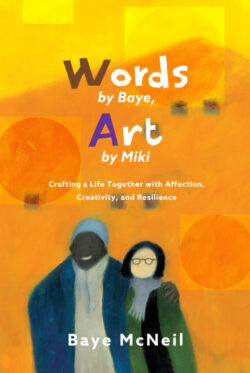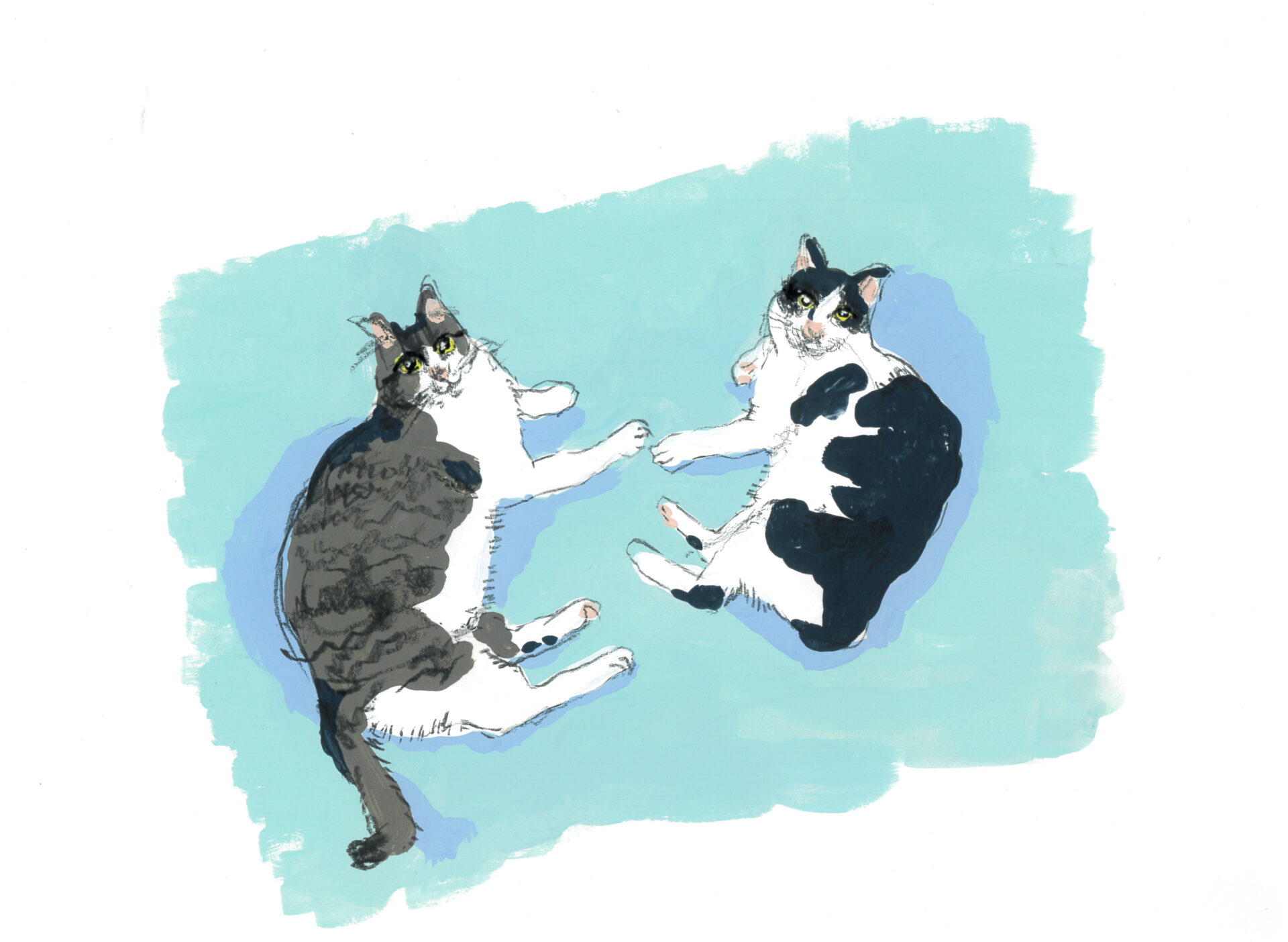
By Lewis Miesen

This witty and heartfelt commentary on life in Japan by Baye McNeil, who has written the monthly Black Eye column for The Japan Times since 2014, delves into themes familiar to many international residents through the lens of a Black American man navigating life in Japan.
Woven together with vivid, coming-of-age anecdotes from Brooklyn, New York City (a country in its own right), McNeil’s storytelling pops with nuance, humor, and vernacular prose that entertains like a well-spoken friend. A resident of Japan for over 20 years, he shares wisdom gathered through lived experience, delivered with sincerity and overflowing with realness. Proverbial mic drops abound.
In his column for The Japan Times, McNeil popularized the concept of “the Gaijin seat,” to explain the all-too-familiar occurrence of the inexplicably empty seat beside foreigners on crowded trains, an experience common to people who are visibly non-Japanese in Japan. Words by Baye, Art by Miki encapsulates many of his past reflections while introducing new layers of awareness and personal insight. Whenever we feel we’ve fully understood the character of Japan (as racist, shallow, or one-dimensional), she reveals a new side to herself, continually surprising us with sincerity, conviction, and often choosing the bold path forward. Ever subtle and genuine, Baye’s stories refuse to paint Japanese people with lazy generalizations, instead revealing the humanity even in those who might otherwise see foreigners as disposable exotic props.
Memorable scenes include a mother’s quiet act of heroism by forcing her hesitant child to sit next to a scary foreigner, breaking the cycle of prejudice and helping to erase “the empty seat phenomenon” from a young age. Baye’s account of the 3/11 earthquake, which in its wake briefly bridged the distance between foreigners and locals, shows a Japan actively embracing equality and change. Candid conversations with his wife, Miki, reflect the profound love, sensitivity, and complexity sustaining intercultural relationships. Her ambitious art and home renovation projects, equal in drive and imagination to her husband’s work, shatter the stereotypes of meek and domesticated Japanese women. In the chapter “Silence of the Cicada,” Baye hilariously recounts the panic of facing down a single insect in his home, showing his original blend of zest, self-deprecating humor, and sharp observation.
Some of the most interesting aspects of the book are the sections about Baye’s origins growing up in the New York City of Gil-Scott Heron, the bold poet and political voice behind “The Revolution Will Not Be Televised.” His experience in the U.S. is just as uncommon and telling as his stories about life in Japan. Educated in a Brooklyn high school centered around Black consciousness, where pupils greeted one another in Swahili, his reflections on American racism are both well-reasoned and unflinching. As a lead organizer to end blackface on Japanese television and a leader in Japan’s Black Lives Matter protests, Baye’s activism forms a crucial part of the narrative.
The impact of Baye’s reflections on life as a racial minority in both the U.S. and Japan could have been strengthened with more cohesive editing. Nevertheless, Words by Baye, Art by Miki is hilarious, reflective, and at times revolutionary, offering a unique awareness about race, identity, and belonging. This is a one-of-a-kind, candid account of life in Japan from a Black Brooklynite.


LEWIS MIESEN is a freelance writer and translator from Texas who resides in Kyoto. A lifelong traveler, he rode his bike for two months across Japan. He enjoys exploring cultures and making new friends from all over the world. In addition to writing for KJ, he is engaged in our advertising and outreach, particularly in Canada and the U.S.